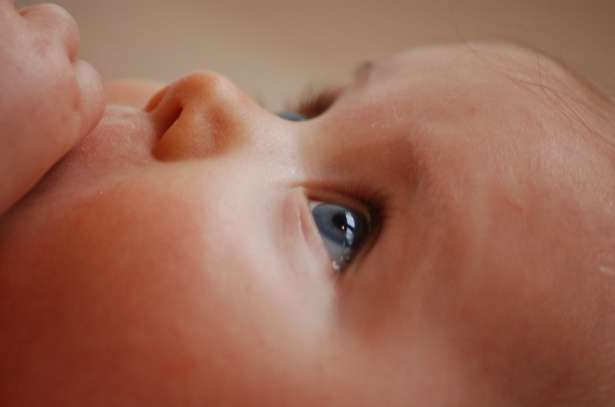Study sheds light on maturation of infant microbiome, no difference between cesarean versus vaginal delivery

A new study published today by researchers at Baylor College of Medicine in Nature Medicine found that the microbiome of infants greatly expands between birth and 4 to 6 weeks of age. The study also found that the mode of delivery, vaginal versus cesarean section, did not affect the infants' microbiome composition when controlled for indication (the reason for the cesarean) and other associated factors such as maternal diet or human breast milk feeding.
Prior to the study, it was thought that infants had a relatively immature microbiome that did not expand until several years of age. However, by collecting samples from multiple body sites (gut, oral gingiva, nares, skin and vagina) and stool from more than 160 pregnant women and their babies through 4 to 6 weeks of age, Baylor researchers were able to challenge prior assumptions based on smaller or more limited studies.
The population-based study of maternal-infant pairs used both 16S rRNA and whole-genome shotgun sequencing to examine the composition and function of microbiota across multiple body sites.
No difference between infants born by cesarean or vaginal delivery
"When we applied general linear models to control for confounders and looked at infants at 4 to 6 weeks of age, we could find no evidence that there was a difference in the microbiome composition between cesarean and vaginally born babies," said Dr. Kjersti Aagaard, professor and vice chair of obstetrics and gynecology at Baylor and maternal-fetal medicine specialist at Texas Children's Hospital.
Researchers controlled for medical indications for cesarean delivery as well as for other factors related to the mother, such as antibiotic use or diabetes.
"We do not see a lasting association between cesarean delivery and a distinct microbiome community or its function in infants beyond the neonatal period. By using a robust study design and state-of-the-art sequencing and analysis, we were able to address a tough question: was it the cesarean surgery itself or the company that the cesarean often keeps," Aagaard said.
"It is incredibly important to answer this question accurately, not only because more than 1 million babies a year are born via cesarean section, but also because any future interventions aimed at correcting or mediating an altered microbiome of cesarean born babies needs to be targeted to the correct window of time. We perform cesarean deliveries every day for really good reasons, and we need to be cautious that we do not assign risk to the wrong source, or misattribute risk to a surgery itself rather than the underlying reason that the surgery was undertaken," she said.
Microbiome expands and matures by 4 to 6 weeks of age
Researchers also found that the microbiome of infants has tremendously expanded by 4 to 6 weeks of age.
"Infants start to show body niche separation just like an adult, meaning that the oral microbiome is distinct from the skin microbiome, which is distinct from the gut microbiome. Except in the stool, we do not see that at birth, but by 4 to 6 weeks of age we are starting to see body niche separation," she said. "That is rather remarkable."
Aagaard also noted that when looking at the microbiome genes by applying state-of-the-art whole genome shotgun analysis, researchers saw functional pathway differences by 4 to 6 weeks of age. When combined with the body niche separations, these data suggest that the microbiomes are starting to mature at a much earlier age than previously appreciated.
"We have to remember that a 4- to 6-week-old baby is still on a completely homogenous diet – ideally exclusively human breast milk – and has limited exposure to the outside world. These babies are not yet crawling, not yet in daycare and have had only one round of vaccinations. Because we were working with generally healthy infants largely born at full term, we knew and controlled for any and all antibiotics that they or their mothers received. What was both surprising and remarkable was that their microbiome has already gone through an initial maturation process with distinct ecological niche separation," she said.
"The infant microbiome, when we look across the board at multiple body sites, shows evidence of maturation in a very short period of time in the absence of exogenous exposure," said Derrick Chu, a student in the Translational Biology and Molecular Medicine graduate program, the Medical Scientist Training Program at Baylor and the study's lead author. "We speculate that this may be due to the fact that it is established in utero during pregnancy and that 4 to 6 weeks for maturation is part of an ongoing process that begins much earlier during the course of the pregnancy. It does not initiate simply at the moment of birth. This was an exciting next step from our lab's prior study characterizing the placental microbiome community."
More information: Derrick M Chu et al. Maturation of the infant microbiome community structure and function across multiple body sites and in relation to mode of delivery, Nature Medicine (2017). DOI: 10.1038/nm.4272
K. Aagaard et al. The Placenta Harbors a Unique Microbiome, Science Translational Medicine (2014). DOI: 10.1126/scitranslmed.3008599















